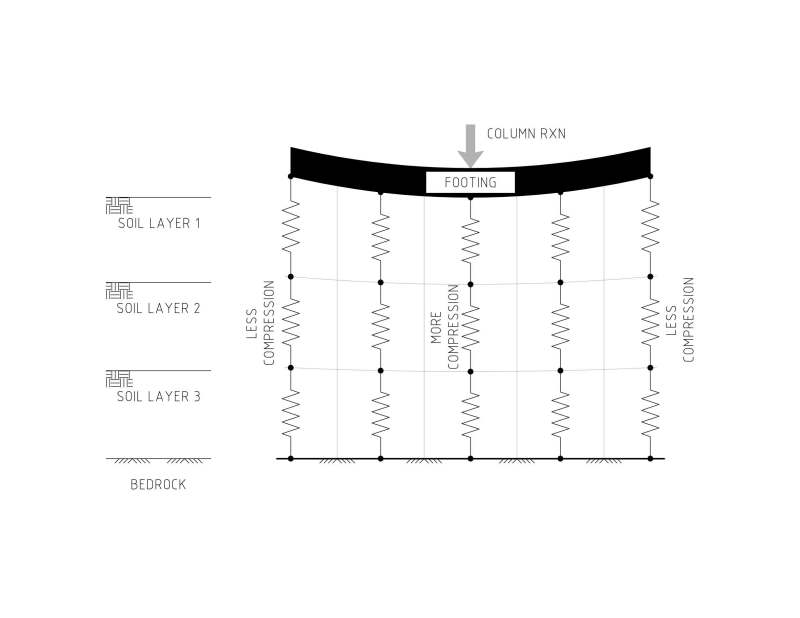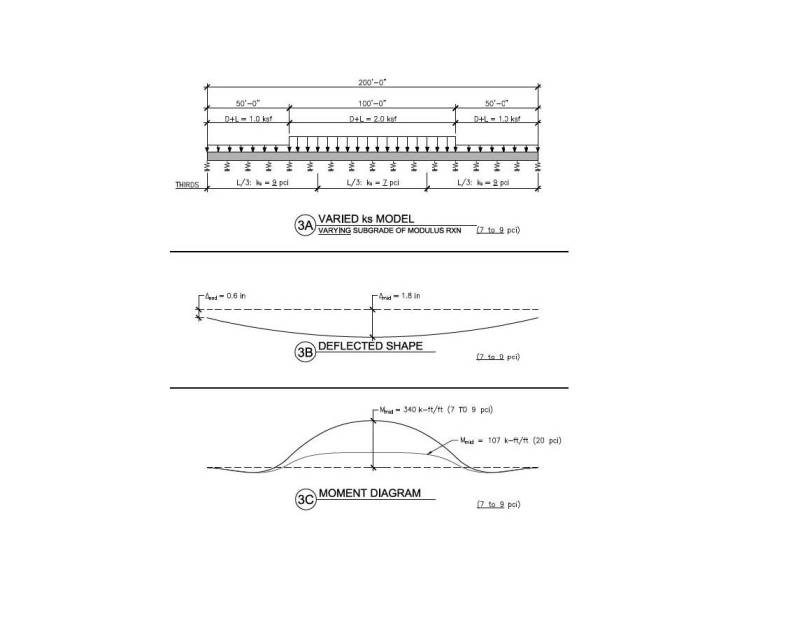MacG,
For most foundation systems, halving or doubling the k of a uniform bed shouldn't change your V & M diagrams more than 10%. If it does, you have a sensitive system that needs more stiffness.
JAE:
I've seen your previous posts and you are obvious an experienced engineer. However, I would challene your last post. Thick is relative. I worked on a project with a 5ft thick mat. Looks really impressive on paper, and even more so in the field. However, it was 100ft long with a 12 story concrete building over it. It was actually very flexible. Aspect ratio (20), concentration of core walls, and cantilever end spans matter more than absolute thickness.
The spring constant values we use in a linear elastic analysis must be "fitted" to the actual or expected displacement. There is no engineering argument against this. We know large mats smile.
Figure 1 is conceptual. Figure 2 has numbers. Not a small discrepancy; the effect on both thickness and reinforcing is substantial.
This was done in RISA (cracked properties), backfitted to a Plaxis2D run. That is, adjusting the RISA k so the displacement pattern was similar. One iteration. Key input and results are shown. It can easily be checked by anyone. For simple problems, Plaxis is handy with nice color graphs, but not necessary. Hand calcs and influence factor estimations will get you close.
Because an engineer hasn't run thru the numbers on an unfamiliar method does not validate or invalidate the method. If we dismiss an idea or over-simplify, we should have a good engineering basis and some analysis results in hand. Otherwise, we are not unlike our contractor friends who tell us, "I built the last retaining wall half the reinforcing that you said it needed, and it hasn't fallen down yet."


